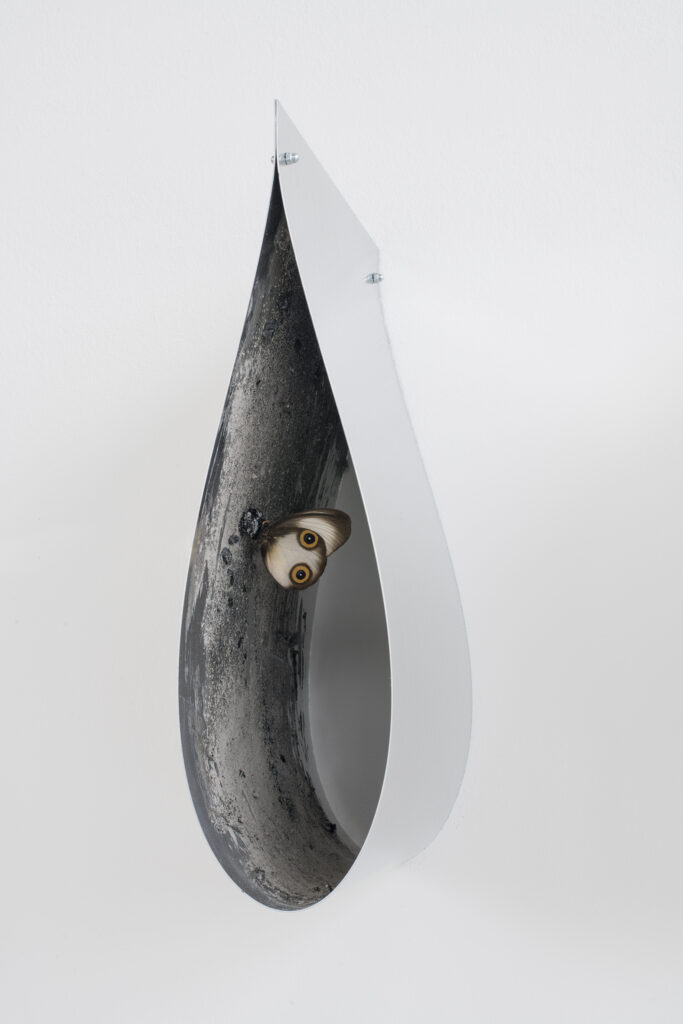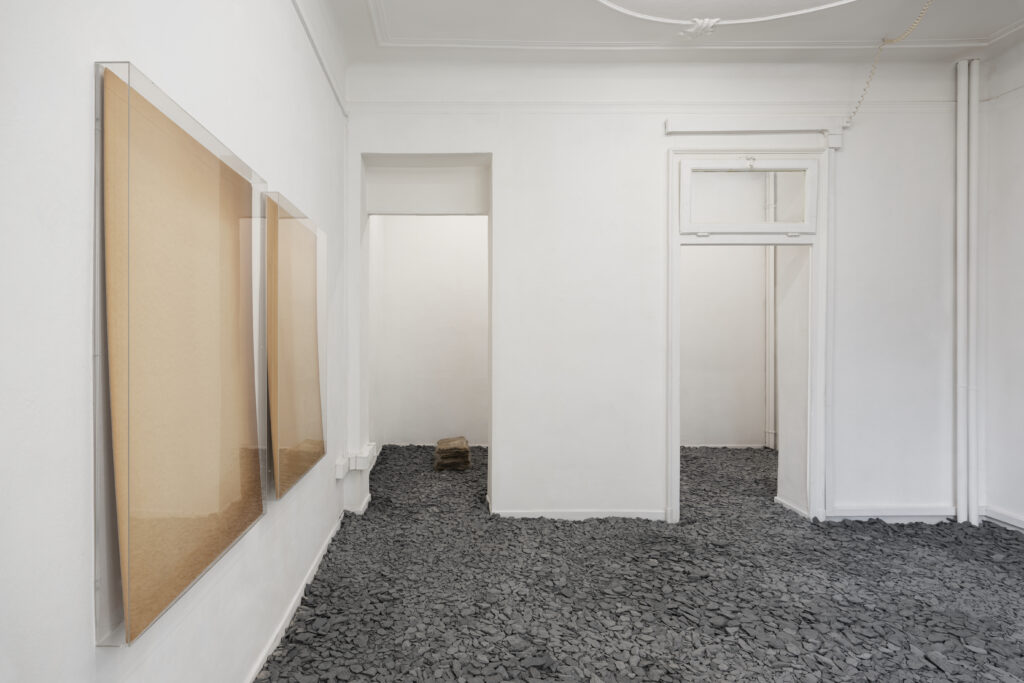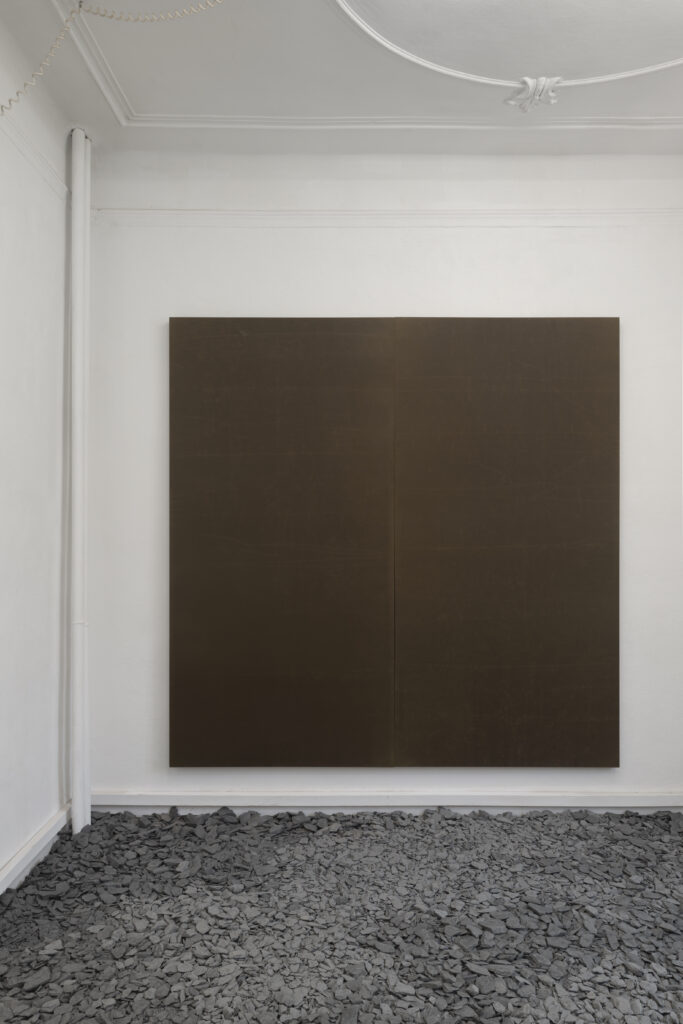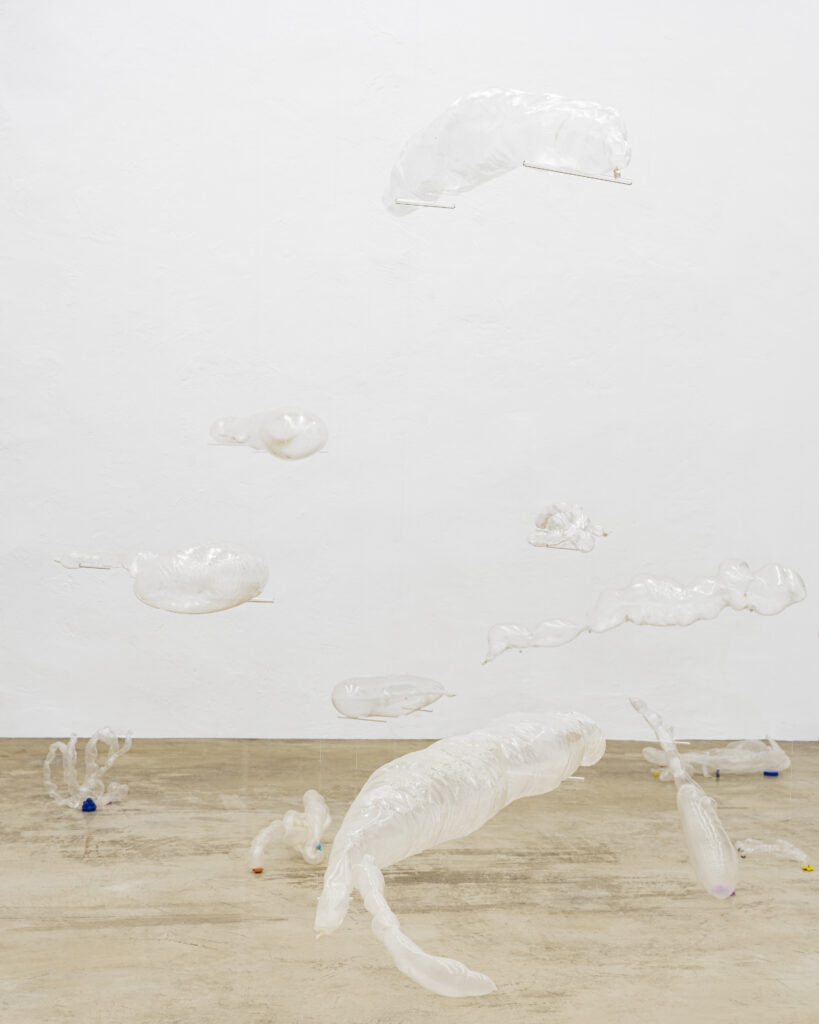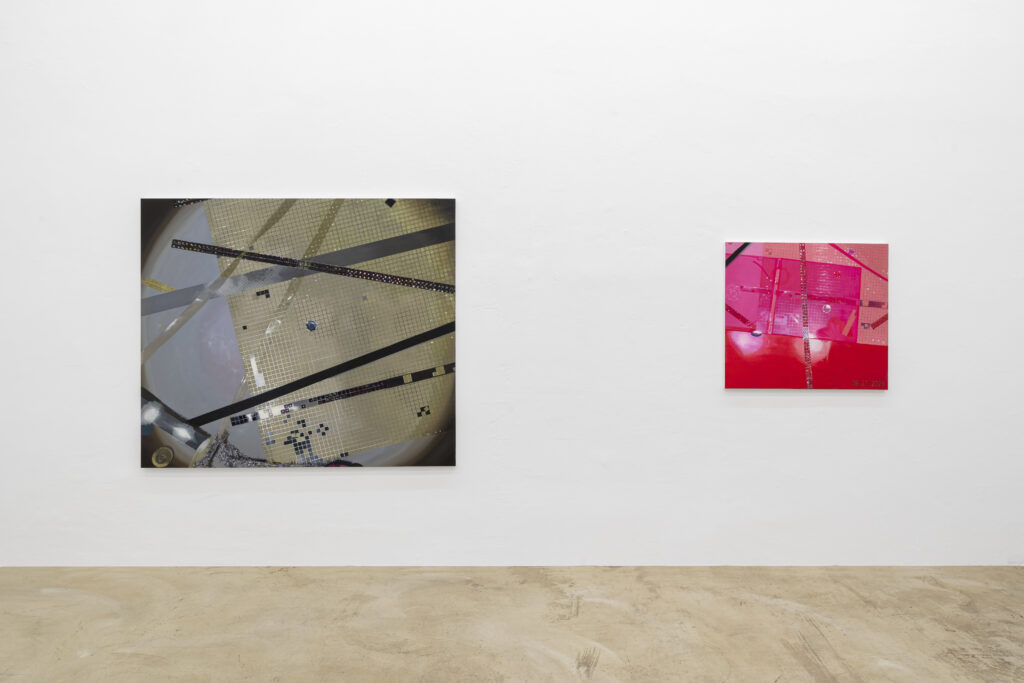Clima is pleased to present ‘Lonely Daters’ the first solo show at the gallery by Marie Matusz ( b. Toulouse, 1994).
Opening reception Thursday, September 22th 2022 from 6 pm
Photo: Marco Davolio
Courtesy: The Artist and Clima, Milan
text by Ann-Kathrin Eickhoff
Lonely Daters merges a group of sculptures and spatial interventions into an emotive environment, layering surfaces and potential readings of objects through their positioning in space. The refusal of a simple figuration, of object-equals-meaning, provides a different potential means of understanding, opening the sculptures to being scrutinised from their surfaces through to their cores, from experience and meaning to reference, thereby detangling the conjectured process of “signification”.
We start from the ground. Covered with slate tiles, it is unsettled with every step. Balance, shingles slipping away from under your feet. Mats made of felted human hair evoke the sense of seeing clumps of one’s own hair in the shower drain. Hourglass-shaped hand blown glass sculptures reflect the room and the viewer, mirror and Vanitas. No sand runs through them – it is as if the auxiliary function of the installation is to make obvious how our sensual apparatus is now up and running, working correctly, continuously associating. The surfaces of the many objects hanging from the walls of the gallery have been tre (...)
Clima is pleased to present ‘Lonely Daters’ the first solo show at the gallery by Marie Matusz ( b. Toulouse, 1994).
Opening reception Thursday, September 22th 2022 from 6 pm
Photo: Marco Davolio
Courtesy: The Artist and Clima, Milan
text by Ann-Kathrin Eickhoff
Lonely Daters merges a group of sculptures and spatial interventions into an emotive environment, layering surfaces and potential readings of objects through their positioning in space. The refusal of a simple figuration, of object-equals-meaning, provides a different potential means of understanding, opening the sculptures to being scrutinised from their surfaces through to their cores, from experience and meaning to reference, thereby detangling the conjectured process of “signification”.
We start from the ground. Covered with slate tiles, it is unsettled with every step. Balance, shingles slipping away from under your feet. Mats made of felted human hair evoke the sense of seeing clumps of one’s own hair in the shower drain. Hourglass-shaped hand blown glass sculptures reflect the room and the viewer, mirror and Vanitas. No sand runs through them – it is as if the auxiliary function of the installation is to make obvious how our sensual apparatus is now up and running, working correctly, continuously associating. The surfaces of the many objects hanging from the walls of the gallery have been treated, dealt with, scratched, and exposed to sunlight, invoking the brush as the agent of existence – I, you, something was here.
If the glass vitrines now on display at “Fall” at Istituto Svizzero, Milano, are enclosing Marie Matusz’s sculptures thereby reducing their visibility, then this exhibition performs a reverse exercise. Here, surfaces are exposed, frame and framed switching places. The encased objects at Istituto Svizzero operate as potentials – an item of furniture, a stage, a tool. On the other hand, the works here show what might have been once there, and what has since gone missing – a potential ex-negativo, an emptied space. (I knew where you had left it until I went looking for it.)
Performing this emptying out the experience of the exhibition might give way to a more affective layer of perception: as “meaning is”, according to Franco Bifo Beradi, “not a presence, but an experience” – ideally one shared, the outside looking in and the inside looking out, like walking in someone else’s shoes.
______
Marie Matusz also have a solo exhibition titled Fall at Istituto Svizzero, Milano. The show is curated by Gioia Dal Molin and will be on view until November, 19th 2022.
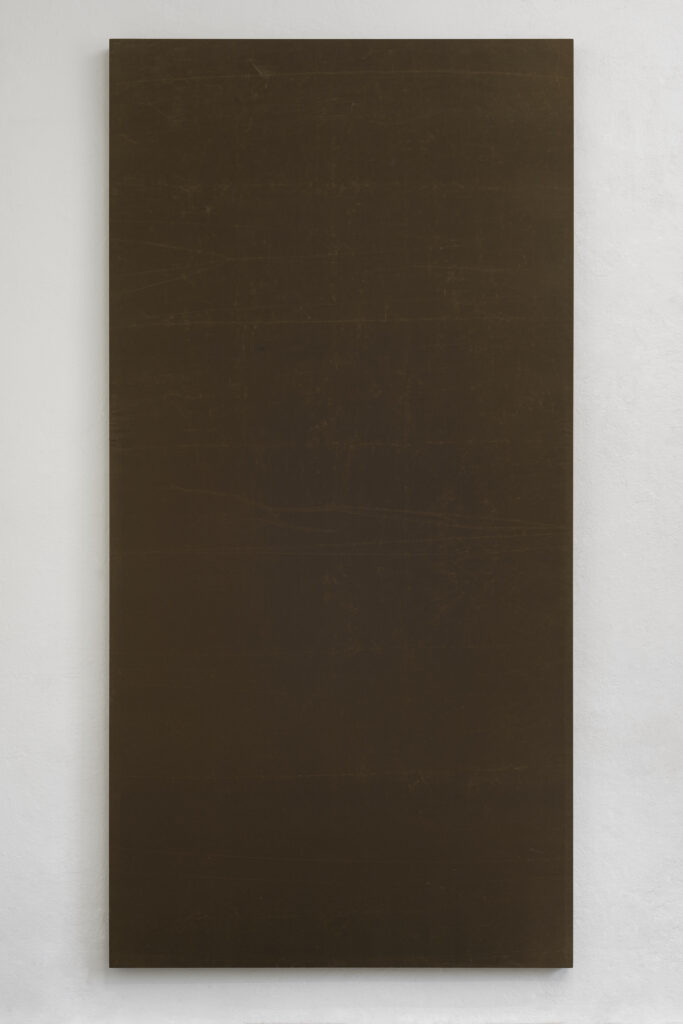 Marie MatuszNo created world ever hindered the course of thunder, 2022
Marie MatuszNo created world ever hindered the course of thunder, 2022
Wax coated fabric, wood frame
240x120x5cm Marie MatuszNo created world ever hindered the course of thunder, 2022
Marie MatuszNo created world ever hindered the course of thunder, 2022
Wax coated fabric, wood frame
240x120x5cm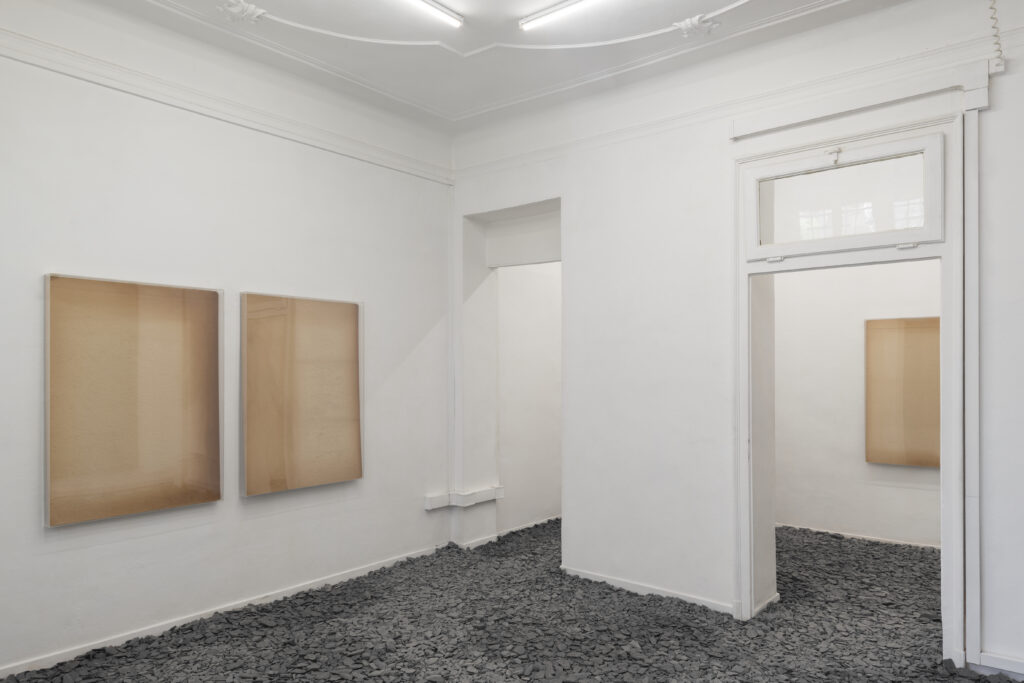 Marie MatuszLonely Daters
Marie MatuszLonely Daters
Exhibition view
Photo: MarcoDavolio Marie MatuszStand still for a second (no needs) (I), 2022
Marie MatuszStand still for a second (no needs) (I), 2022
Information panels, acrylic glass
132x96x8cm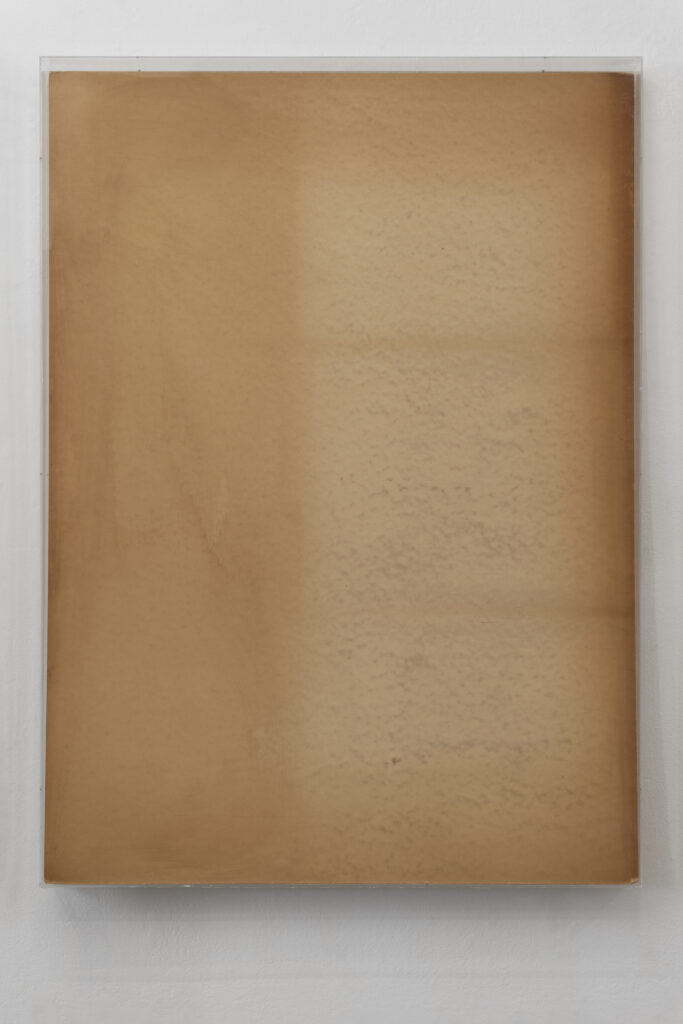 Marie MatuszStand still for a second (no needs) (II), 2022
Marie MatuszStand still for a second (no needs) (II), 2022
Information panels, acrylic glass
132x96x8cm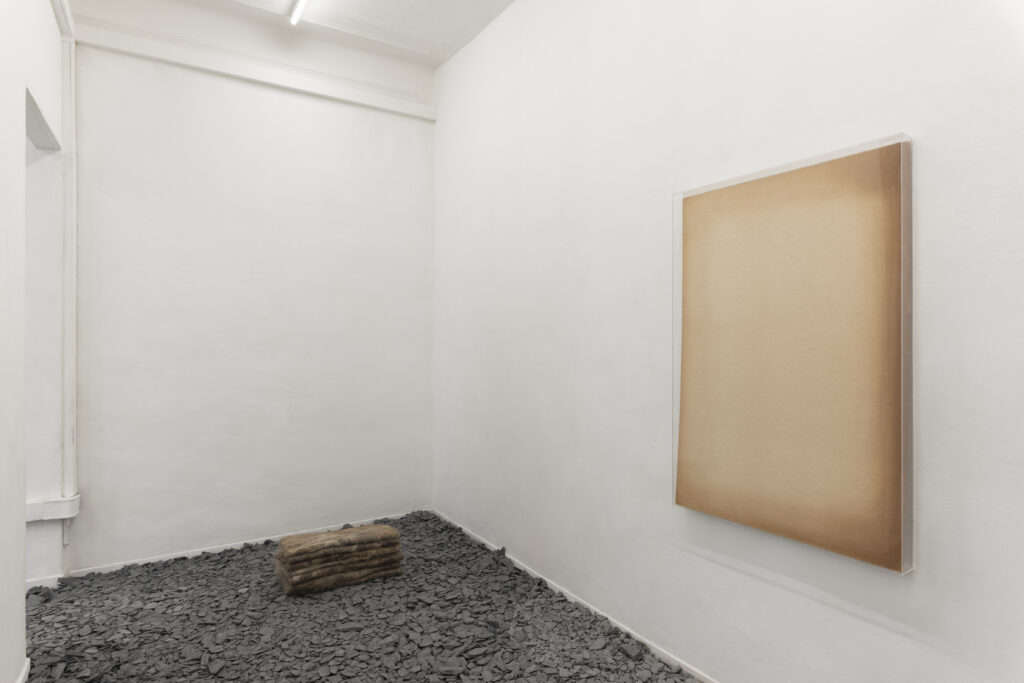 Marie MatuszLonely Daters
Marie MatuszLonely Daters
Exhibition view
Photo: MarcoDavolio Marie MatuszStand still for a second (no needs) (III), 2022
Marie MatuszStand still for a second (no needs) (III), 2022
Information panels, acrylic glass
132x96x8cm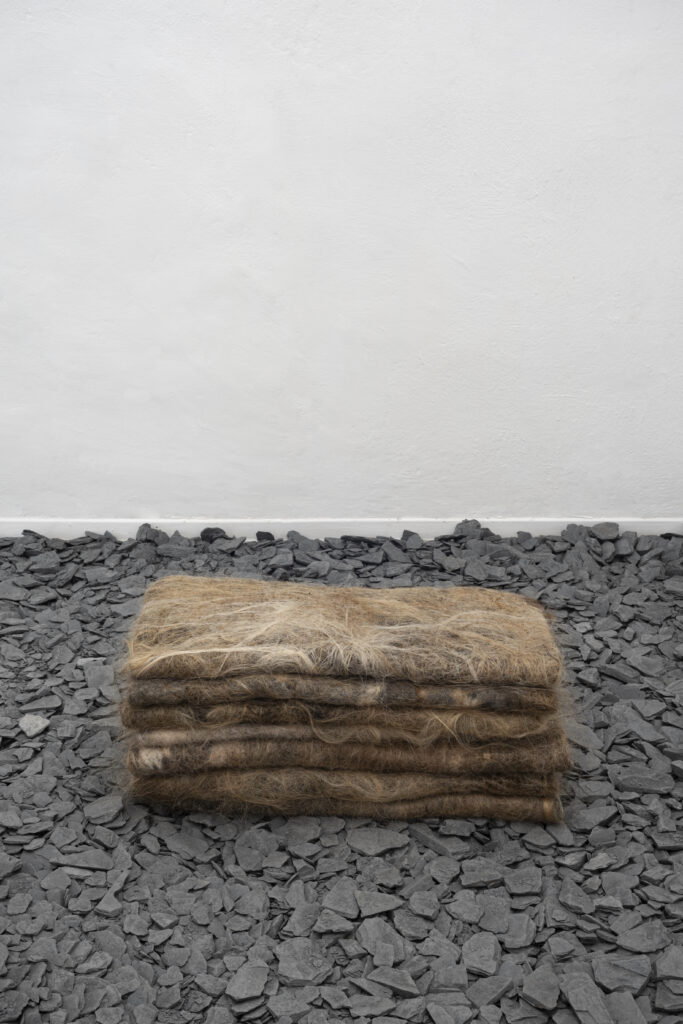 Marie MatuszThe Doomed, 2022
Marie MatuszThe Doomed, 2022
Hair mats
83x46x18cm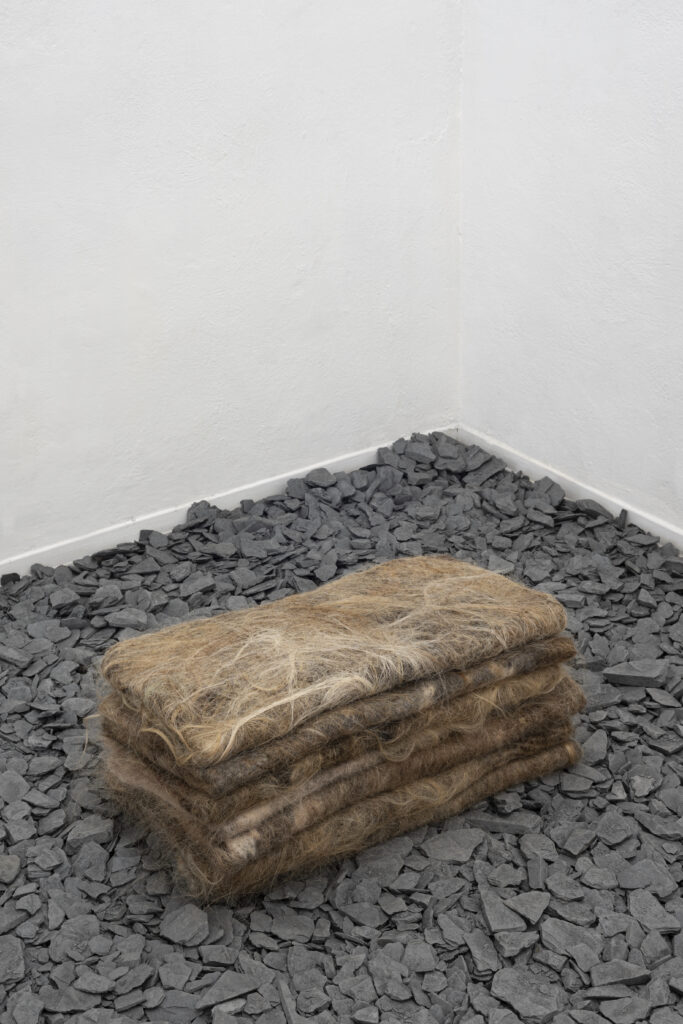 Marie MatuszThe Doomed, 2022
Marie MatuszThe Doomed, 2022
Hair mats
83x46x18cm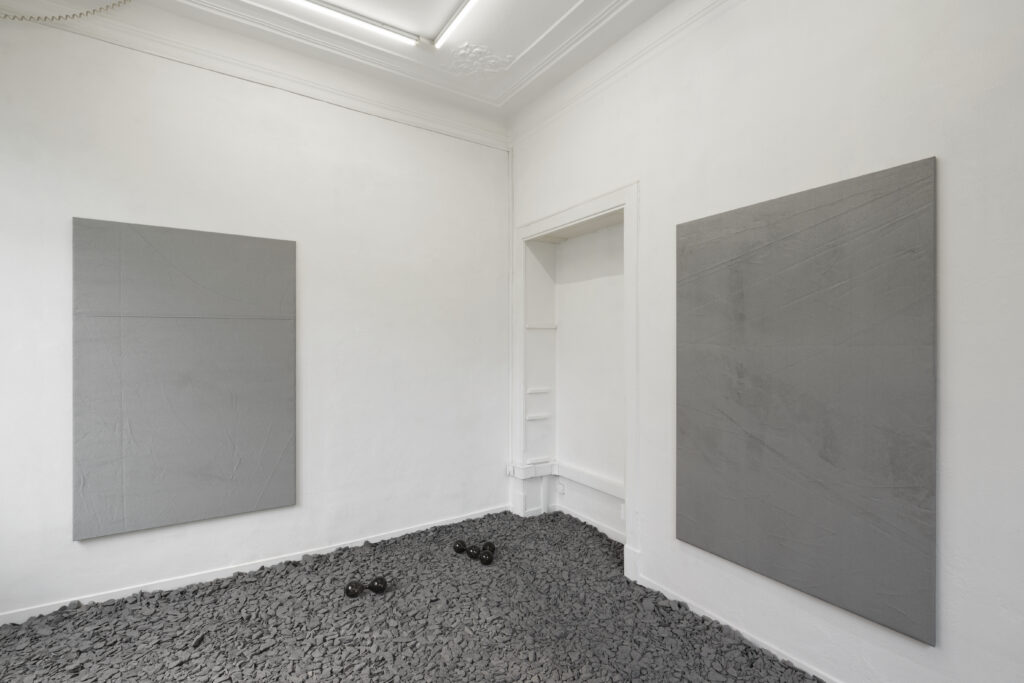 Marie MatuszLonely Daters
Marie MatuszLonely Daters
Exhibition view
Photo: MarcoDavolio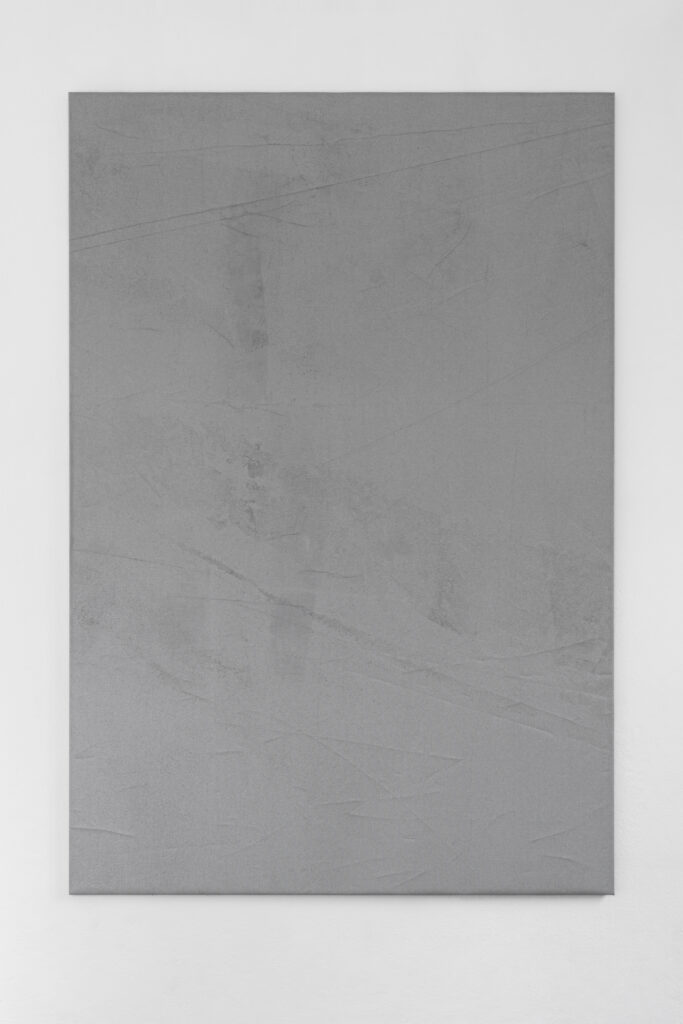 Marie MatuszHarness the Storm (portrait), 2022
Marie MatuszHarness the Storm (portrait), 2022
Shaders (aluminium woven fabric)
190x130x2cm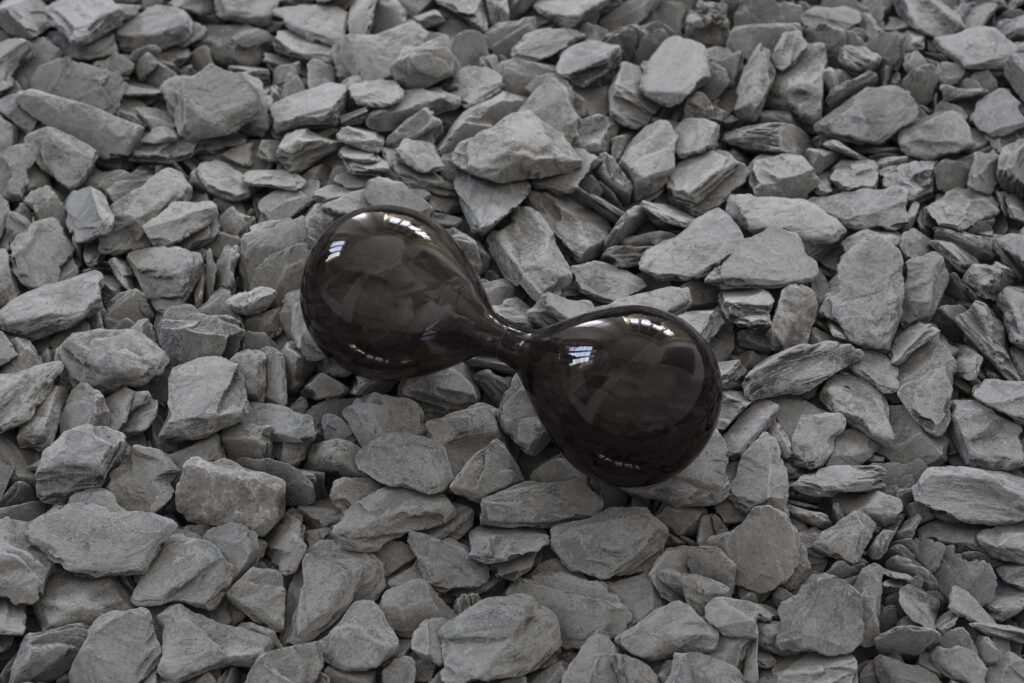 Marie MatuszEmptiness as Grace, 2022
Marie MatuszEmptiness as Grace, 2022
Hand blown glass
25x10x10 cmeach Marie MatuszHarness the Storm (landscape), 2022 Shaders (aluminium woven fabric)
Marie MatuszHarness the Storm (landscape), 2022 Shaders (aluminium woven fabric)
190x130x2cm
Marie Matusz (b. 1994, Toulouse) lives and works in Basel. Her work results from critical engagement with forms and their inherent meanings, evolving through in-depth re- search into philosophical, sociological, and linguistic theories. By juxtaposing elements and textures, she creates an aesthetic of management and develops a choreography of the viewer while the works seem to remain motionless and static. This suspension goes beyond the physical, as it seeks to activate a suspension of time. Her work plays with this moment of idleness by presenting objects from various historical archives taken from our classical lexicon, and reexamining them through contemporary lenses and production techniques. Marie Matusz obtained a bachelor’s degree in Visual Arts from the Geneva University of Art & Design (HEAD) in 2016 and a master’s from the Basel Academy of Art & Design (FHNW) in 2018. Recent solo exhibitions include Until We Turn Blue (Dorothea Von Stetten Art Award), Kunstmuseum Bonn (2020); Epoche, Kunst Raum Riehen (2020); Golden Hour, Atelier Amden (2019); and Caravan, Aargauer Kunsthaus (2019). Matusz received the Swiss Art Award in 2021.
